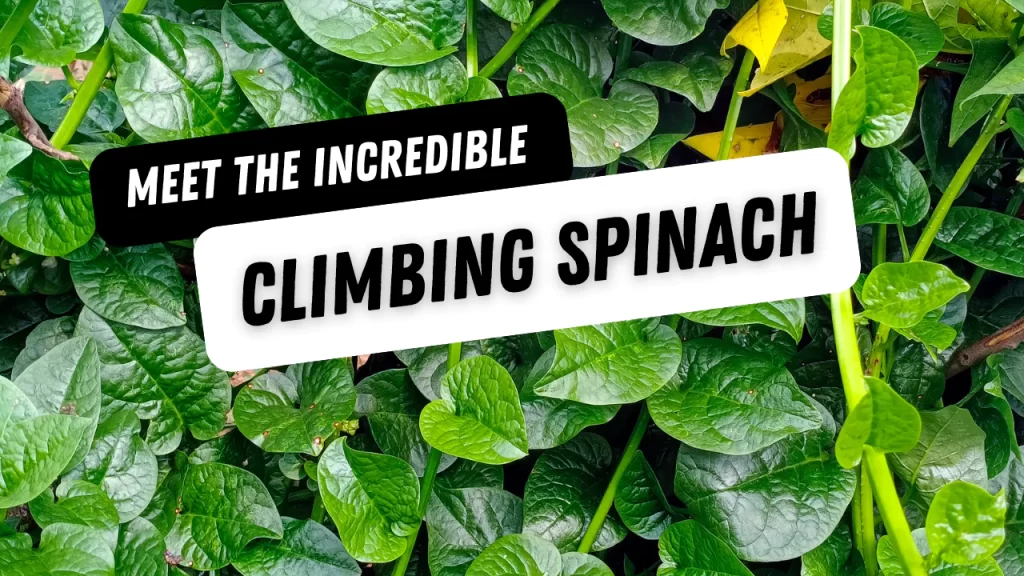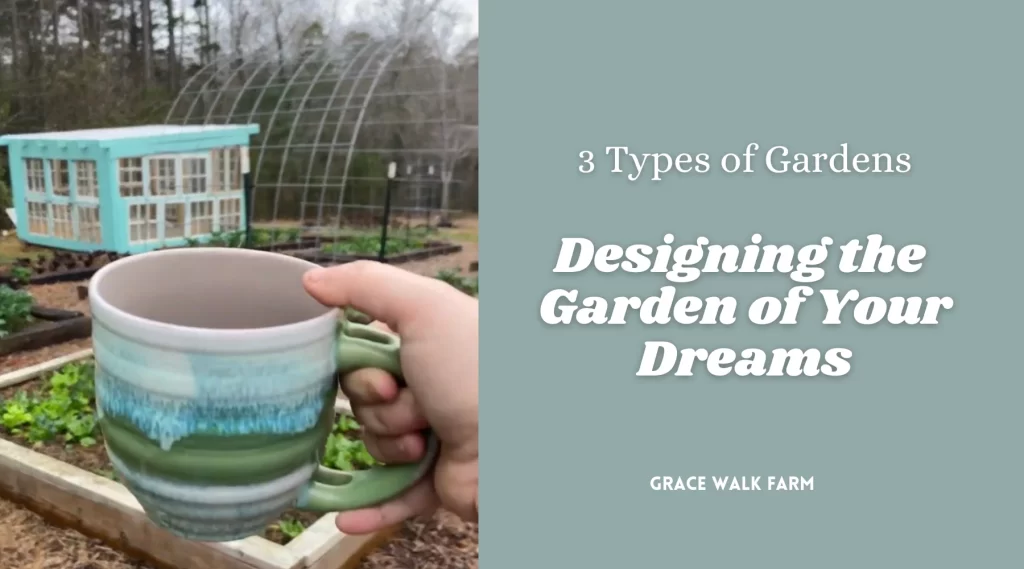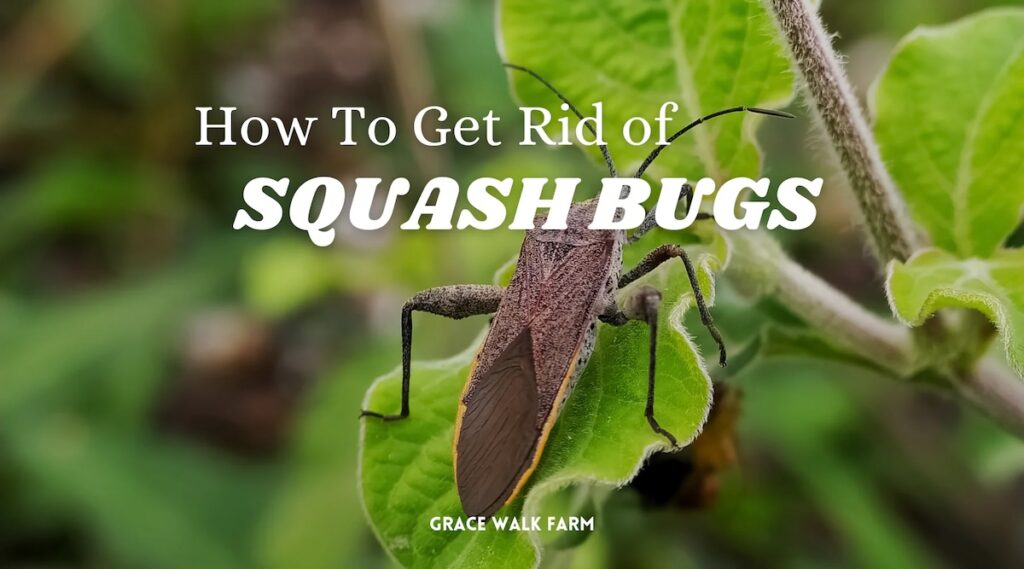Are you ready to learn the secrets to growing better tomatoes? You can never have too many homegrown tomatoes! They are truly the ultimate crop and one of the reasons I continually show up to work in the garden. If you’ve ever tasted a homegrown tomato and compared it to the taste of a store-bought tomato, you know exactly what I’m talking about. There’s just no chance for store bought tomatoes to win in this contest. Homegrown tomatoes are sweeter, juicier, and have the best flavors when ripened on the vine.
Welcome to Grace Walk Farm, our family homestead in western NC. We share the highs and lows of our homestead journey, in hopes that it will encourage you to grow your own food too. Click here to grab our Beginner Garden Guide for free! Join our 600K strong Instagram community of homesteaders here. Thanks for stopping by!

Growing tomatoes isn’t difficult, but there are a few secret strategies that experienced gardeners use to take their tomatoes to the next level. Over the past few years, I’ve been developing my own tomato growing strategy and I’ve uncovered a few tips that make a huge difference in the final outcome of my harvest. Today, we’re going to take a deep dive into the world of tomato growing tips and I’ll share with you 9 secrets to grow better tomatoes this year.
Secret #1 – Choose the Right Variety of Tomatoes
Choose the right variety: Not all tomatoes are created equal, and different varieties have different growing requirements. When choosing the best tomato variety for your garden, there are 3 key things to take into consideration.
How Long is Your Growing Season?
For gardeners who live in cooler climates, your growing season will be much shorter than someone in a warmer climate zone. So you will need tomatoes that ripen quickly. Short-season varieties like the “Early Girl” tomato variety will be your best bet. Early Girl tomatoes mature in just 50 days. Cherry tomatoes are another smart choice for short-season summer gardening, as they develop quickly and push out a large harvest all at once.
If you live in the south or in a warmer climate zone, you’ll do best with a variety that can tolerate the blazing heat of summer. Varieties like the “Heatmaster” or the “Arkansas Traveler” are well known for their ability to thrive in heat and high humidity.
How Do You Plan to Use the Tomatoes?
Are you planning to make tomato sauce or salsa? If so, you want a paste tomato that has fewer seeds and more meat. Some of my favorites are the San Marzano and Amish Paste varieties – both of those options are wonderful for making sauce and canning.
Do you prefer a big thick tomato to slice for sandwiches and fresh eatings? Then you definitely want to include a classic beefsteak. Do you prefer bite size cherry tomatoes for salads and snacks? Then you’ve got to try Sun Gold tomatoes or Chadwick Cherry. So delicious! Maybe you’re like me and you like all three.

How Much Space Do You Have to Devote to Growing Tomatoes?
There are two distinct types of tomato plants – determine and indeterminate. The kind you choose will largely depend on how much space you have and your ability to support the size of a massive tomato vine. If you’re limited on space, you might prefer determine tomatoes. These are “bush” varieties that grow to about 3-4 feet tall. They produce a big harvest all at once, which is perfect if you plan to use your tomatoes for canning.
Determinate tomatoes may need the support of a cage or a stake, but they generally won’t need a lot of pruning or trellising like the indeterminate varieties. Determine tomato plants are the best choice for container gardening.
Indeterminate tomato varieties grow much larger and they produce a continual steady harvest of fruit until the plant dies from frost exposure when fall arrives. These varieties can get very large (surpassing 6-7 feet in height depending how you trellis them). Indeterminate tomatoes are my personal favorite because they just have unlimited potential. The more you tend them and meet their needs, the more tomatoes you’ll be able to pick off the vines.

Secret #2 – Plant Deep to Grow Tall
When you add tomato plants to your garden, the process is a little different from other plants. Most plants are buried just at the soil level with the full plant above ground. But this is not the case with tomatoes. Tomato stems are unique in that they can form roots. If you look closely at your tomato stems, you may notice some fuzzy little hairs. These are the beginnings of potential root growth.
When you plant tomato plants into the garden, bury them all the way to the first set of leaves. This will allow the plant to develop more roots and a stronger underground support system. When you plant tomatoes deeply like this, you encourage new root growth, which ultimately will lead to greater tomato production through the season.
This little tip is especially helpful if you are growing tomatoes from seed. As your seedlings grow, they may get a bit leggy – meaning they have tall spindly stems where they are reaching for sunlight. If this happens, just transplant your seedlings into new pots and bury them deeply – let the root growth from the stem start early.
When you transplant the seedlings into the garden, you can dig a trench and lay the stem in sideways, bending very gently. Remove any lower branches and leaves. Cover the stems and roots with soil, leaving only the true leaves to grow above ground.
Secret #3 – Give Your Tomato Plants a Strong Start
When you plant tomatoes, there’s a few things you can add to the garden that will set your plants up for success. This secret might be the strangest of all, but after testing it in my own garden, it really works! When you dig a hole or trench to plant your tomato plant, add 2 things – a whole egg and ¼ cup of worm castings.
The egg trick has been used by gardeners for decades and the idea behind it is that the calcium in the egg shell will gradually break down and leach into the soil through the growing season, preventing blossom end rot, a frustrating issue that can cause tomato growers some issue. The worm castings are my personal favorite addition as this really gives the plants a strong start and a surge in vital nutrients to help your plant survive transplanting and get established and strong quickly. You can learn to make your own worm castings here.
Secret #4 – Choose Good Neighbors for Your Tomatoes
What you plant next to your tomatoes is very important. Companion planting is the most powerful tool in the organic gardener’s arsenal for fighting against pests and disease in the garden. By adding the right companion plants, you can literally repel pests from attacking your tomatoes and eliminate the need to spray any type of pesticide (organic or conventional) on your garden.
My favorite companion plants for tomatoes:

Basil – Basil and tomatoes go together both inside the garden and on your plate. This powerful herb repels hornworms that can destroy your yield.

French Marigolds – Marigolds can help prevent root-knot nematodes, nasty little parasites that attack the tomato plant’s root system. Marigolds also help repel aphids and hornworms.

Turnips – I oftentimes plant turnips in a border around my tomato plants. The turnip greens act as a trap plant and attract aphids, whiteflies, and other pests that tend to cause issues for tomato plants. I typically let the insects enjoy the turnip greens and this keeps them off of my tomato plants. Then I harvest the turnip roots and get an edible reward for my pest-control measures. Pretty sweet!
Secret #5 – Provide Proper Support
Tomato plants grow quickly and they will need to be staked or caged to prevent the plant from falling over and breaking. Indeterminate varieties will especially benefit from careful trellising and support. We’ve experimented with many different tomato trellising methods over the last few years. We tried the Florida weave system, which honestly didn’t work well for us at all. We found that the plants could easily outgrow the weave faster than we could keep up with it and we ended up with broken plants and a big mess.
Next, we tried tomato cages. We built cages out of concrete wire and zip ties and that worked fairly well. It was completely sufficient for our determinate tomatoes, but the indeterminate varieties outgrew the cages long before the growing season was over, which again led to broken stems and frustration.
So last year, we set up a whole new system for growing tomatoes. We used 16-foot livestock panels and T-posts to build our own trellising system. Then we used twine and zip ties to tie the plants the panels. This method worked beautifully and we had our best tomato harvest ever. We will continue using that trellising system in the future. You can see a video of how we set up our tomato trellises here.

Secret #6 – The Secret Sauce to Get More Tomatoes
There’s a little trick I discovered that makes a HUGE difference in the number of tomatoes I get to harvest from each plant. When you see the first blooms start to form on your tomato plants, sprinkle 2 or 3 tablespoons of bone meal at the base of each plant and then water it in well.
Bone meal is rich in phosphorus, a nutrient your plants need to push fruit production. When you have a tomato plant that is covered in beautiful healthy leaves and no fruit, the problem is typically too much nitrogen and not enough phosphorus. To head this issue off before it begins, I started adding bone meal and wow – it really works! You’ll see a noticeable difference in the size and health of your tomato plants within a few weeks of applying bone meal. This is the bone meal that I use or you can make your own.

Secret #7 – Heavy Pruning Prevents Disease
Learning to prune your tomato plants is critical if you want to enjoy a good harvest. Pruning is not as complicated as most of us imagine it to be when we get started. Here’s a few quick tips to help you learn to prune your tomatoes…
- Cut away any leaves or branches that are touching the ground. Anything touching the ground will introduce disease to the plant.
- Remove the “suckers” – these are little growths that appear between the main stem and the branches of the plant. The suckers eventually form new branches and if you don’t remove some of them, the plant will quickly grow large and out on control.
- Remove any leaves that look diseased. If there are spots or fungal issues, get rid of those parts of the plant immediately.
- Don’t remove the top of the plant until you are ready for the growing season to end. Once you remove the top, it won’t grow back. The fruit that is currently growing will continue to form and ripen, but you won’t get new growth at the top so be careful not to top your tomato plants too early.
Secret #8 – Water Deeply and Regularly
Tomato plants need regular watering at every stage, from tiny seedlings to large fruiting vines. Always water tomatoes from the base of the plant – try to avoid splashing water on the leaves, which can introduce fungal issues and invite disease.
As a general rule, tomatoes need 1-2 inches of water weekly. Consistency is more important than the actual amount of water they receive. Inconsistent watering can lead to cracked tomatoes and blossom end rot. Underwatering can also hinder fruit production.

Secret #9 – The More You Pick, The More You Grow
Don’t be afraid to harvest those tomatoes! You’ve worked hard to reach the point when your tomatoes are ready to harvest, so don’t be afraid to get out there and start picking tomatoes. As you harvest tomatoes, it will signal to the plant that it needs to create more fruit. Remember that on a biological level, the tomato plant has one goal: produce fruit filled with seeds that will continue the life of the plant in a new generation. The tomato plant wants to reproduce! So you can encourage tomato production by regularly harvesting your tomato plants.
By following these 9 tips, you’ll be able to grow the best tomatoes possible. Remember that growing tomatoes is a fun and rewarding experience, and the best way to learn is through experimenting and observing what works well for you. Your garden is YOURS – that means that you decide the rules and the methods that you want to follow. Don’t be afraid to try new things. You might just discover your own tomato growing secrets along the way.
Want more garden tips? Download my Garden Guide here!
Are you an experienced gardener with some tomato growing tips to share? Leave a comment below and tell us your secrets to growing good tomatoes.Share
Also check out these blogs:




